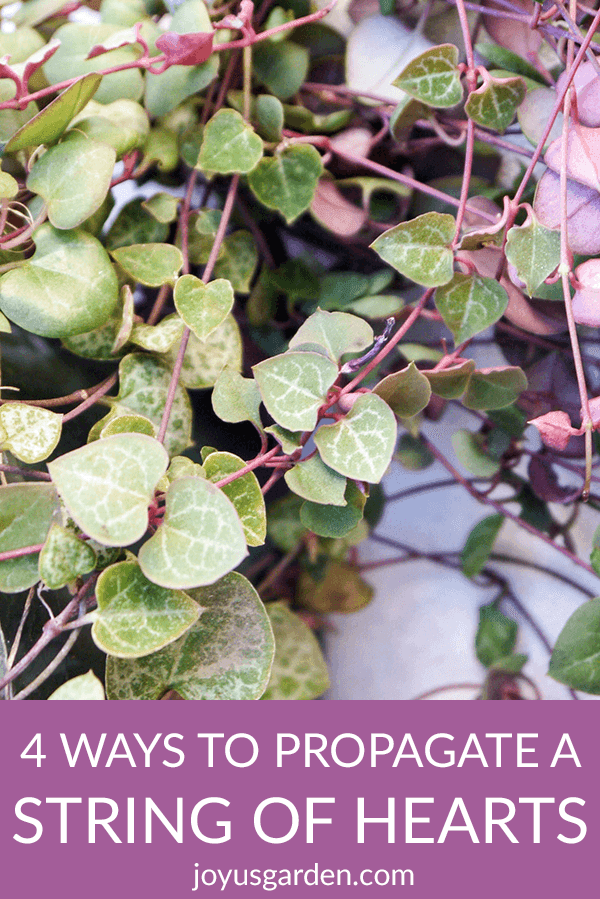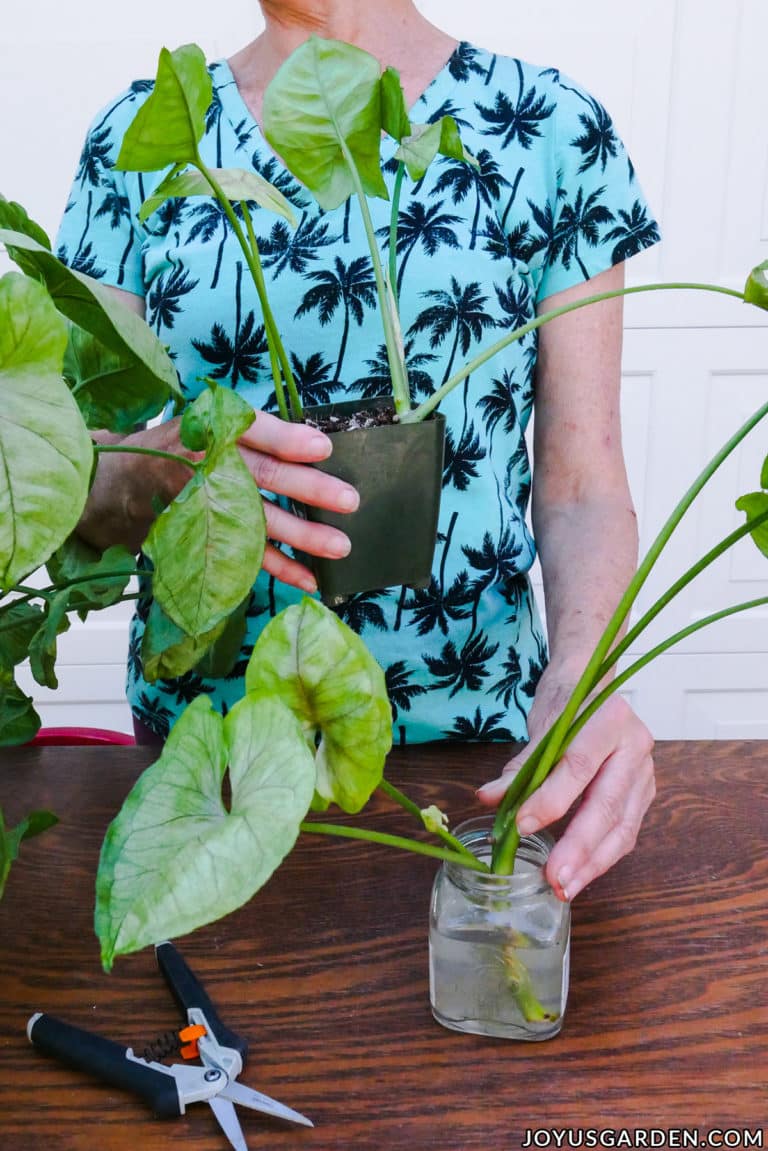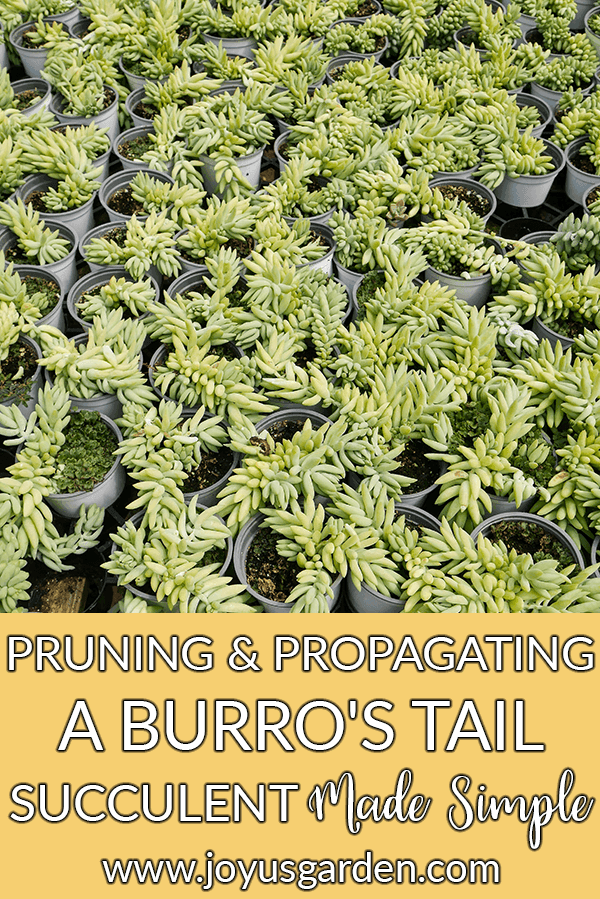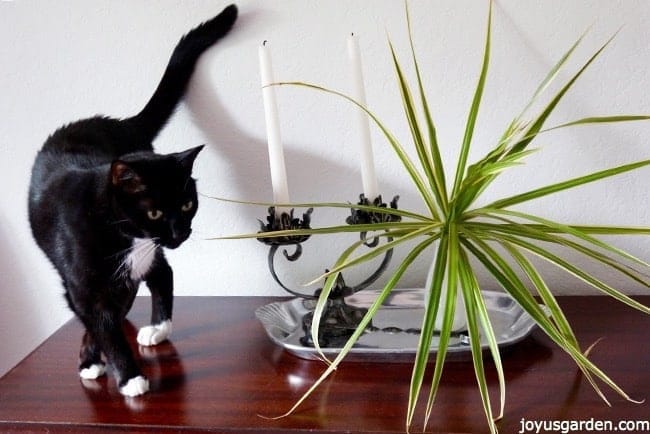How To Plant Baby Rubber Plant (Peperomia Obtusifolia) Cuttings
The Baby Rubber Plant, or Peperomia obtusifolia, is an easy care houseplant which thrive even here in the hot, dry Sonoran Desert. I usually give away all the plants I’ve grown from cuttings but not this time. I’m keeping this propagated plant and it’s already gracing a table in the guest room. Here’s how to plant Baby Rubber Plant cuttings including the time of year to do it, the mix to use and how to care for them once planted.
This post and video applies to planting all species and varieties of Peperomia cuttings (that I know of anyway), not only the Baby Rubber Plant. I now have 5 different Peperomias and may be picking up a few more if I find any which catch my fancy. The Baby Rubber Plant is the 1 most commonly found in the houseplant trade and is a snap to grow. Why wouldn’t I want 2 of them?!
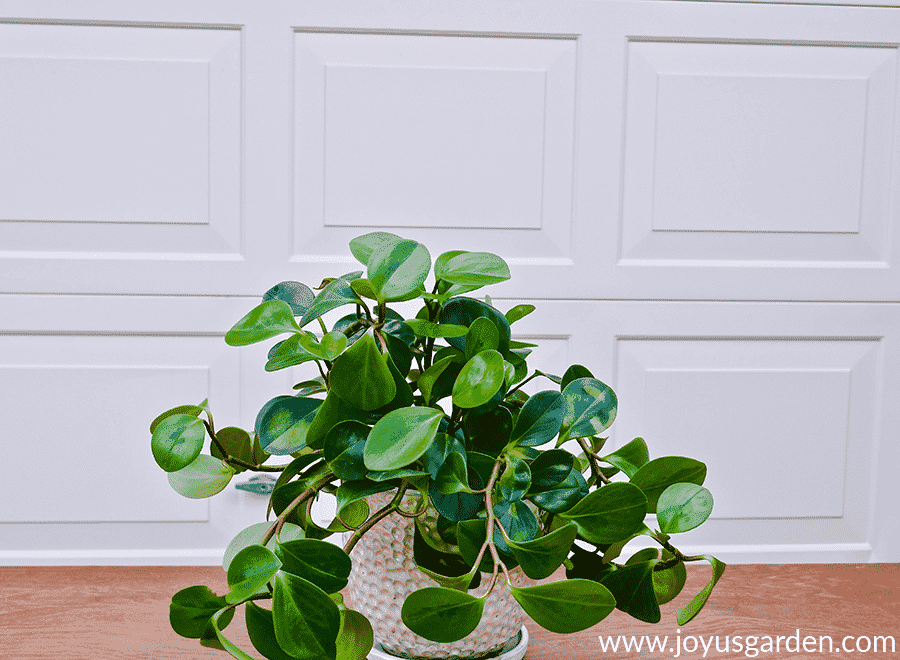
The mother plant before the pruning & propagating. You can see the process in this post & video.
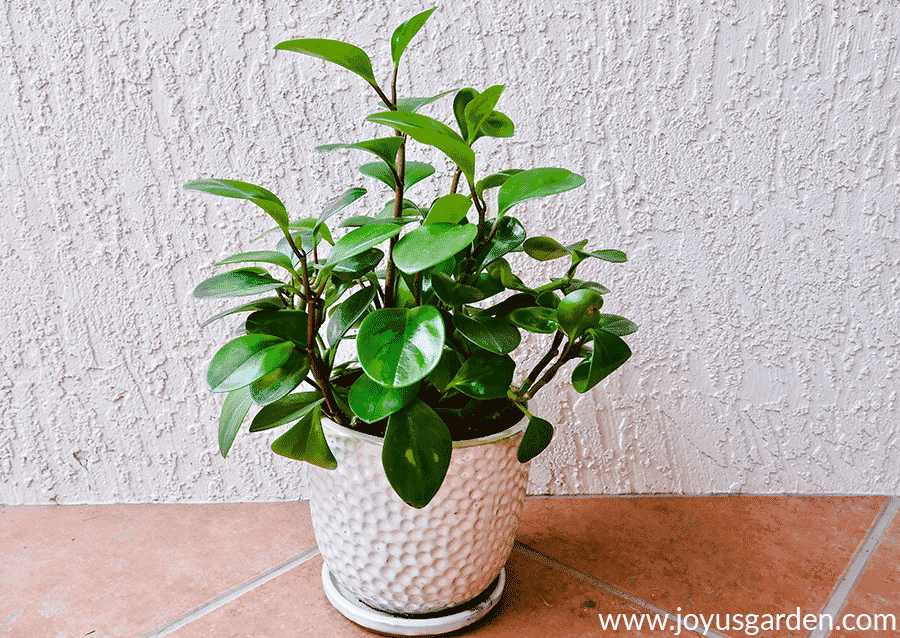
How it looks a couple of months later. It fits so much nicer in the guest bathroom. The other plants appreciate the space!
I’ve already done a post and video about repotting Peperomia plants and the drill here is pretty much the same. Baby Rubber Plant cuttings can be a wee bit of a challenge to plant. The leaves and stems store a lot of water. The weight of the cuttings (except if they’re tip or leaf cuttings) makes them prone to falling out of the light mix they’re being planted in.
I put a stake in the middle of the pot before planting the cuttings. This gave me something to hang on to while I was placing the cuttings around in the pot. I ran a piece of jute string around the cuttings to keep them in place while they’re taking root. A few of them wanted to flop out so the twine was a good solution.
Some Of Our General Houseplant Guides For Your Reference:
- Guide To Watering Indoor Plants
- Beginner’s Guide To Repotting Plants
- 3 Ways To Successfully Fertilize Indoor Plants
- How to Clean Houseplants
- Winter Houseplant Care Guide
- Plant Humidity: How I Increase Humidity For Houseplants
- Buying Houseplants: 14 Tips For Indoor Gardening Newbies
- 11 Pet-Friendly Houseplants
Best time to plant Baby Rubber Plant cuttings:
Like all houseplants (that I know of anyway), spring & summer are the best times. I’ve found that cuttings root in faster when the weather is warm. Early fall is fine too if you’re in a more temperate climate. Late fall through winter isn’t the optimum time to do this.
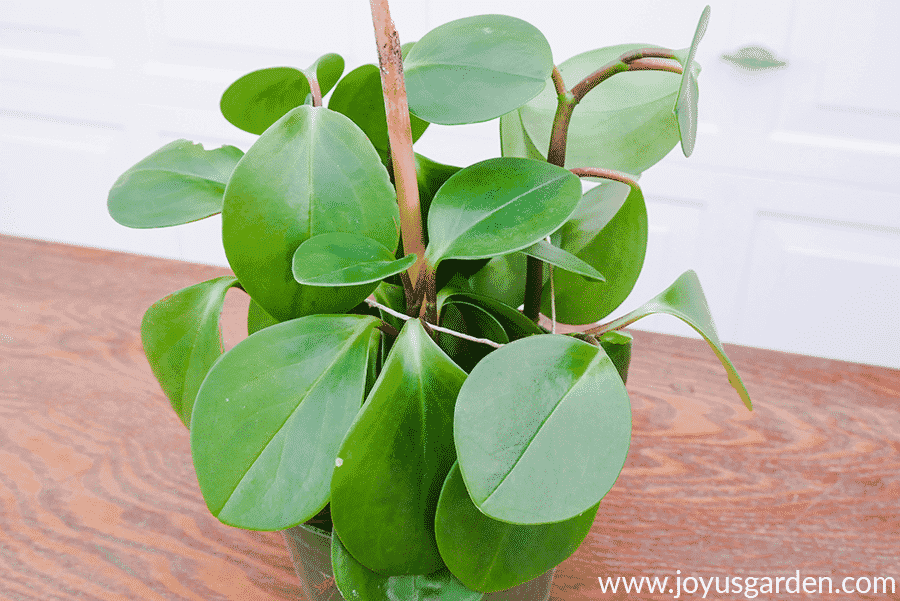
The cuttings right after planting. The jute string really helped.
The mix to use:
Peperomias are epiphytic when growing in their natural environments just like orchids & bromeliads. They grow on other plants, fallen wood & moss; not in the soil. They are sheltered by the canopies of trees & shrubs & thrive when protected from full, direct sun.
They get their nourishment from organic matter leaf matter & debris falling from the plants growing above them. This means they like a very porous mix that also has a lot of richness.
I like this blend below because it’s rich yet drains well. These are organic ingredients I always have on hand because my collection of plants is steadily growing. You’ll find a few alternative mixes listed a few paragraphs down.
1/2 organic potting soil
I’m partial to Ocean Forest because of its high-quality ingredients. It’s a soilless mix & is enriched with lots of good stuff but also drains well.
1/2 succulent & cactus mix
Here’s the recipe for the mix I use. It has a lot of coco chips & fiber in it which mimics the bark Peperomias grow on.
If you don’t want to make your own, these are available online: Bonsai Jack (this 1 is very gritty; great for those prone to overwatering!), Hoffman’s (this is more cost effective if you have a lot of succulents but you might have to add pumice or perlite), or Superfly Bonsai (another fast draining 1 like Bonsai Jack which is great for indoor succulents).
A couple of handfuls of orchid bark
Just to up the ante on the bark as well as the drainage factor.
A couple of handfuls of charcoal
Charcoal improves the drainage & absorbs impurities & odors. Pumice or perlite ups the drainage factor too. This is optional, like the composts & the orchid bark, but I always have them on hand.
A couple of handfuls of compost
A thin layer (1/8-1/4″) of worm compost on the top
This is my favorite amendment, which I use sparingly because it’s rich. I’m currently using Worm Gold Plus. Here’s why I like it so much.
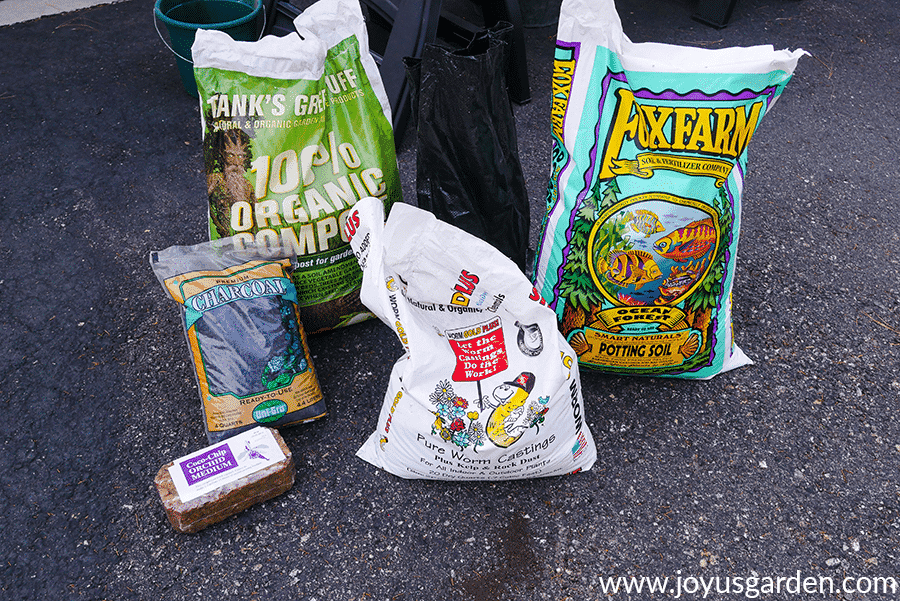
The ingredients. My homemade succulent & cactus mix is in the black bag in between the compost & the potting soil.
Alternative mixes:
– 1/2 potting soil to 1/2 succulent & cactus mix
– 1/2 potting soil to 1/2 coco coir chips
– 1/2 succulent & cactus mix to 1/2 coco coir chips
– 1/2 potting soil to 1/2 perlite or pumice
– 1/2 potting soil to 1/2 orchid bark
– 1/3 potting soil to 1/3 coco coir chips to 1/3 perlite or pumice
You get the idea. There are many opinions on the blend to use but I’m sure you can find 1 which you and your peperomias like the best. Rich, light, and well drained is the key.
You can watch the video to see how I planted the cuttings:
How to care for your newly planted cuttings:
These cuttings started rooting fast. After a week I gently pulled on them & felt a slight resistance. I removed the stake & twine at this time – that wasn’t needed for very long! At this point I was able to adjust a few of the cuttings so they weren’t all growing straight up towards the middle.
I gave the plant a thorough watering right after I filmed the video. Because the cuttings had been growing in water, I didn’t want them to sit in dry mix for more than an hour.
I placed my Baby Rubber Plant on a table in my guest room next to a large north facing window. There’s lots of sunshine & the days are long in Tucson right now so this spot suits it well. Yours might need a little more light, depending on where you live.
I’ve been watering it once a week, just like the mother plant. Because this plant roots in so fast, I basically treat it like 1 which is already established. I’m doing a post and video on Peperomia care within the next few months so keep your eye open for that.
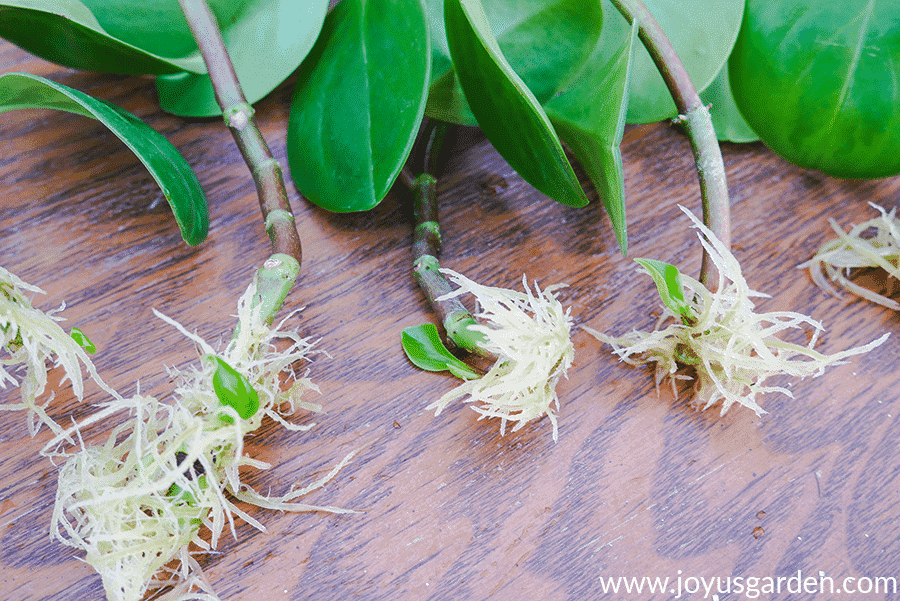
You can see how well rooted the cuttings were. Plus, baby plants were appearing at the base.
How often should you repot your Peperomia?
Peperomias don’t grow too big & they don’t mind being a bit tight in their pots. I repot them when the soil mix is looking old or when quite a few roots are showing out of the drain hole(s). In other words, don’t rush to repot yours. I won’t repot the 1 you see here for at least 3 years, maybe longer.
This has nothing to do with planting cuttings but if you have pets, it’s good to know:
Peperomias are non-toxic to both cats & dogs. Yippee!
Baby Rubber Plants are easy to propagate, easy to plant, and easy to care for. What’s not to love?!
Happy gardening,

Did you find our post on baby rubber plant cuttings useful? Enjoy our other content on repotting, propagation, and container gardening!
Pruning & Propagating A Baby Rubber Plant
What To Know About Planting Aloe Vera In Containers
Repotting Snake Plants: The Mix To Use & How To Do It
Repotting Peperomia Plants (Plus The Proven Soil Mix To Use!)
Succulent & Cactus Soil Mix For Pots: A Recipe To Make Your Own

